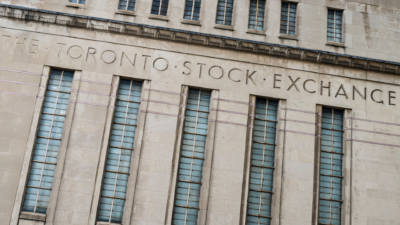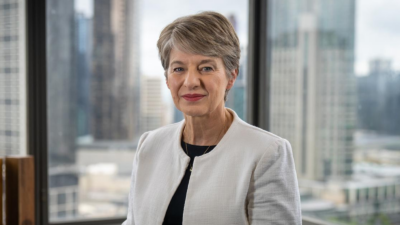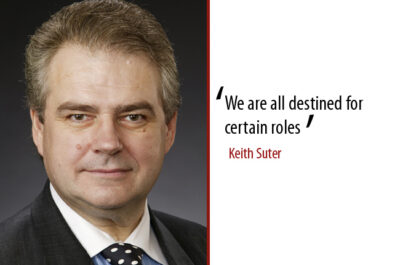AustralianSuper ponders search for safe assets
Mark Delaney… ‘didn’t someone say there are no more dangerous words in investment than ‘this time it’s different’?’
A couple of years into its ambitious push into internal management of its investments, AustralianSuper is well advanced in its aim to manage about a third of its assets in-house. But this progress hasn’t necessarily helped with the task of coping with investment uncertainties. BARRIE DUNSTAN spoke with the fund’s deputy chief executive and chief investment officer, Mark Delaney.
Six months ago, Mark Delaney and his team were relatively optimistic about markets. Today, they are “probably less optimistic,” but he’s still not sure if that is enough to move to outright pessimism and the difficulty of finding ‘safe’ asset categories.
AustralianSuper continues to review its asset allocation policy monthly although the portfolio’s broad picture doesn’t change much from quarter to quarter. He says investment trends “can go on for quite some time. The only trick is to find out when they change.”
In May it thought equity market conditions might continue for another year. Now, with conditions changing in Europe and China, the fund is, at the margin, probably less optimistic. But is that enough to become outright pessimistic? Delaney is not sure.
History is one starting point in these decisions but he says just because things haven’t occurred before, it doesn’t mean they won’t happen now. “Didn’t someone say there are no more dangerous words in investment than ‘this time it’s different’?”
Typically, balanced funds have more than half their money in shares and hold fixed interest and other investments to dampen the share market’s volatility.
But Delaney says bonds don’t always hedge against a fall in the share market; plenty of times shares and bonds have fallen together. Now, with interest rates so low, there is a cap on what investors can make from a fall in interest rates. Similarly foreign currency isn’t always the answer. (AustralianSuper recently got up to 23 per cent in foreign currency recently.)
While he says super funds like to have a range of diversified diversifiers, Delaney says, right now, there isn’t a really defensive asset other than cash.
AustralianSuper has been gradually diversifying into more international shares and its balanced fund has about 29% in local shares against 32 per cent in international.
Currency can be a problem; Delaney muses that any move in the dollar “comes in fits and starts. It falls and then it stops for a bit, enough to lull you into a false sense of complacency – and then it falls again.”
On investment fundamentals, he still thinks the US is a standout. The Fed understands the issues and the need to maintain stimulus to the economy, the US market offers greater exposure to new industries and energy self sufficiency from gas. As well, he thinks the US market is not too expensive.
Looking back on eight “phenomenal years” since the 2006 merger of ARF and STA, Delaney says the move has proved the original strategy correct. The reasons for merging – the need for a stronger brand to meet increasing competition, the benefits of scale, and the greater capabilities from a larger organisation – all turned out to be correct.
It has become a much more prestigious organisation and has attracted higher quality people while increasing its head count. AustralianSuper has tried to maintain an entrepreneurial culture “to be bigger to be better, to be different to be better.”
“A lot of organisations work out what seats people sit on in the train,” he says. “We like to focus a lot more on where the train’s heading. If the train’s heading in the wrong direction . . . reorganising the seats really won’t make that much difference.”
He estimates the fund has about 10 per cent of its overall assets under internal management compared as part of an eventual 2018 target of one-third.
A lot of initial discussion centred on potential cost savings – perhaps $150 million-$200 million a year on assets of $100 billion within a few years.
Delaney says at recent MERs of more than 60 basis points, the current $80 billion portfolio would cost $480 million a year in external manager fees. “Is that the only way to spend $480 million?”
The exercise was also about achieving capacity in fund mangers’ portfolios and building internal capability in areas like infrastructure investments, as well as building Australian Super’s internal investment knowledge.
The starting point was a review by asset consultants Frontier of the performance of about 12 of AustralianSuper’s long-standing, existing equity managers.
Delaney says it’s not that his group doesn’t value external managers but the review found there were only one or two managers with track records of adding 3-4 per cent and one or two with 2 per cent a year. The rest were around 1 per cent.
Those equity managers included John Sevoir when he was at Perpetual. He was in the exceptional category, says Delaney. . “But you can’t have four John Seviors in your portfolio.” (Sevior has since helped start Airlie Funds Management which AustralianSuper seeded with a $1.5 billion mandate)
Overall, says Delaney, AustralianSuper ‘s equities managed plus 1per cent, with good managers averaging 1.5 per cent. If its internal management managed 1.5 per cent “we think we can get lower cost without giving up performance.”
But it is also about the investment arithmetic of achieving capacity in external managers’ portfolios. With a limit of perhaps five external Aussie equity managers, each having a limit of about $10 billion in total, with perhaps a quarter of that available to AustralianSuper. The could only place about $12.5 billion externally – well short of its potential $30 billion of Aussie equities.
By developing internal equity management, the entire $10 billion capacity would be used so internal management could take a big slice of equities and still leave room to run index portfolios. The same principles will apply to international equities, which will be in the next phase.
The fund also is developing internal expertise in infrastructure, where assets are now a little over 10 per cent of the total. Delaney would like to have more of what he calls this ideal asset class. Reliable income streams over 20 or 30 years like roads or the Port of Botany are hard to get. “We need more of them really,” he says.
Its deal over the Queensland Motorways with Transurban was “attractive,” he says. The fund was able to participate in the takeover, do some of the underwriting and take up shares at an attractive price.
AustralianSuper has now committed to a scalable platform for its internal management to handle order management systems and back office systems like compliance and risk management.
Last year AustralianSuper had a net cash flow of $5 billion, the biggest of any local super institution, but it is now looking at a slower rate of growth of inflows.
On top of the government’s slow down in the Superannuation Guarantee contributions, there has been a general slowing in other growth factors like growth wages and employment, plus there’s an effect from the consolidation in account numbers.
The difference is, says Delaney, that unlike in earlier periods when all funds in the industry were growing, now Australian Super is growing at a faster rate than the industry.
As the fund matures, Australian-Super wants to do more on pensions by encouraging members with modest balances to think of an income stream in retirement.
He says roughly two thirds of people with amounts of more than $100,000 opt for an income stream. While lump sums might make sense in cases of small balances, members with a reasonable balance could add perhaps 20-40 per cent to their age pension – a significant amount for people on what is otherwise a frugal income.
The prospect of most members in future taking an investment option with some income to supplement their pension won’t cause any substantial, immediate changes in its portfolios. Delaney notes that members on a part age pension, in effect, have about $500,000 in a government bond linked to CPI. “So they can afford to be a little more adventurous in their other investments.”
And there is still some time before AustralianSuper reaches maturity (when outflows out equal inflows), causing changes in asset allocations. Net cash flows as a percentage of member assets have declined gradually: about 14 years ago, it was probably 10 per cent while now it is around 6 per cent. Delaney thinks it might take until 2030 to get to zero.










